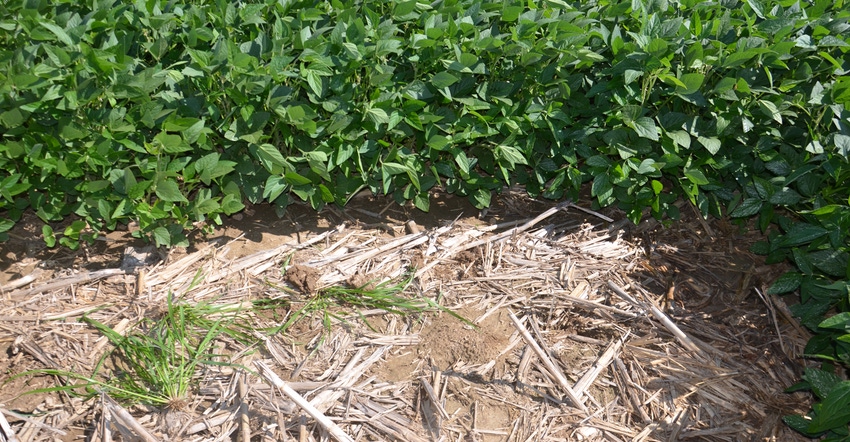
The Soybean Watch ’20 field looks very good from one end, but not quite as promising in aerial views taken with a drone. That’s because over a large hill in the field, hidden from view on one side of the hill, are perhaps a half dozen to a dozen scattered spots with no soybean plants — not one.
Most of the spots are about the size of a large pickup truck. “We picked them up about midseason while scouting,” reports Steve Gauck, a regional agronomy manager with Beck’s, located near Greensburg, Ind. Beck’s sponsors Soybean Watch ’20.
Related: Learn what not to worry about when scouting
“From a distance, it looked like perhaps an area where the planter malfunctioned, but the spots don’t run across a whole planter width,” Gauck says. “Once we walked into them, we could tell the real cause. You could find one or more burrow in each spot where moles or voles were hiding.
“They will clean off every plant, and even take the weeds out in some cases. It looks like nothing ever grew there.”
The Soybean Watch ’20 field consists of soybeans no-tilled into heavy corn residue. The field can be irrigated, and the 2019 corn crop yielded over 240 bushels per acre.
“We tend to see them [bare spots from mole or vole damage] more in minimum tillage, although they could show up anywhere,” Gauck notes. “When I flew the field with a drone later in the season, they really stood out and detracted from an otherwise good-looking field. If you add all the damaged spots together, it probably doesn’t account for very much actual acreage, so there won’t be a big impact on yield per acre. But there is no arguing that the empty spots are unsightly.”

EYE ON DAMAGE: Later in the season, Steve Gauck took a closer look at areas wiped out by moles or voles. He notes that by zooming in on this drone image, you can see the burrow in the middle.

Seek solutions
There is no magic wand to wave or silver bullet to shoot and make rodent problems disappear, Gauck says. There is a pellet available that can be used at planting, but it’s expensive and toxic to some beneficial species.
“Some people resort to unconventional solutions to try to reduce the mole and vole population,” Gauck says. “I actually know of people who have built simple perches after the season around bare spots caused by moles and voles, hoping predator birds will land there and feed on the rodents. No one has documented how well it works, but it is one possibility.”
A reader who saw an earlier article this summer about the mole and vole problem called in with another possible remedy. He notes that if you’re willing to chisel-plow just over and near the spots where you find damage, you can disrupt the burrows and cause them to move elsewhere.
The caller noted that the technique had been used successfully on his farm in the past.
About the Author(s)
You May Also Like




